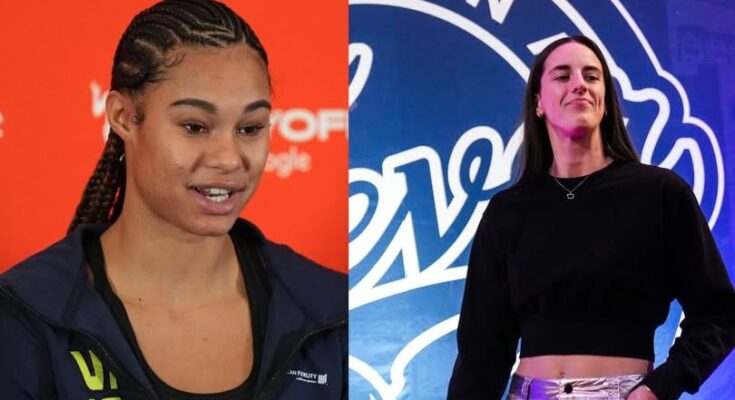The headline referencing “Fever rumors” for Satou Sabally is a nod to the widespread speculation during the 2025 WNBA offseason that the Indiana Fever, with their substantial cap space and the allure of playing alongside Caitlin Clark and Aliyah Boston, were a potential landing spot for Sabally. Sabally herself had publicly stated her intention to leave the Dallas Wings, declaring she had “played her last game for Dallas” and that both she and the Wings were “looking to find a next home” for her. This fueled intense speculation, with the Fever frequently mentioned as a prime suitor.
However, as we now know, Satou Sabally was ultimately traded in a multi-team deal that sent her to the Phoenix Mercury, not the Indiana Fever. This move, facilitated by the Dallas Wings using their core designation on Sabally to ensure they received assets in return, created a new “super team” in Phoenix with Sabally, Alyssa Thomas, and Kahleah Copper.
Despite not landing in Indiana, Satou Sabally has indeed offered support to Caitlin Clark, albeit in a more general context of the grueling WNBA schedule and the challenges faced by players, particularly those under intense public scrutiny. Sabally, an All-Star forward herself, has been vocal about the physical and mental demands of the WNBA season. Just recently, she echoed sentiments from other players like Kelsey Plum and Natasha Cloud, expressing concern about the league’s condensed schedule. “Cathy (Engelbert) added a lot of games,” Sabally was quoted saying, referring to the WNBA Commissioner. “And us as players, recovery is so important. We put our bodies on the line every single time. We had nine games in 18 days. It’s not really responsible for a commissioner.”
This kind of statement, while not directly about Clark’s individual performance or specific rumors, indirectly offers support by validating the immense physical and mental strain WNBA players, especially high-profile ones, are under. Clark, as the league’s most visible and scrutinized player, is undoubtedly bearing a disproportionate share of this pressure. Sabally’s comments highlight a shared concern for player well-being, acknowledging the collective burden, which in turn offers a form of understanding and support to figures like Clark who are at the epicenter of the league’s burgeoning popularity and its accompanying challenges. The “Fever rumors” simply served as a backdrop for a broader conversation about player welfare and the demands of the league.
It’s also worth noting that in September 2024, after a game where the Dallas Wings lost to the Indiana Fever, Sabally had a somewhat humorous, yet telling, comment about the “Caitlin Clark effect.” She stated, “Obviously, it’s annoying because there were way too many Caitlin fans in our arena,” but quickly followed up with “But kudos, because it’s amazing to see so many people in women’s basketball jerseys, it’s amazing to see the excitement and the joy that comes out of that.” This showed a nuanced perspective: while the influx of rival fans could be “annoying” in the moment, she recognized and appreciated the larger positive impact Clark was having on the league’s visibility and attendance. This too is a form of support, acknowledging Clark’s powerful influence despite the competitive dynamic.
The plight of Angel Reese, unfortunately, represents a much darker and more sinister side of the heightened public interest in WNBA players. The “stalker drama” and the horrific revelation that Angel Reese was compelled to discuss something as intrusive as AI-generated pictures being sent to her relatives is a deeply disturbing development. This transcends typical fan interaction or even negative criticism; it veers into dangerous territory that underscores critical issues around online privacy, digital safety, and the disturbing misuse of artificial intelligence.
This incident is not just “infuriating in addition to being heartbreaking”; it’s a stark warning about the evolving nature of harassment in the digital age. Here’s why it’s so egregious:
- Violation of Privacy: The act of sending AI-generated, likely manipulated or explicit, images to a player’s family members is an extreme violation of privacy. It crosses a fundamental boundary, targeting those closest to the player and attempting to inflict emotional distress on a wider circle.
- Psychological Warfare: This isn’t just about public criticism; it’s a deliberate act of psychological harassment. It’s designed to intimidate, shame, and destabilize. The goal is to make the victim feel unsafe and exposed, not just in their public life but in their most intimate personal sphere.
- Misuse of AI Technology: The use of AI to generate or manipulate images adds a terrifying new dimension. Deepfake technology and other AI tools can create highly convincing, yet entirely fabricated, images or videos. This makes it incredibly difficult for victims to debunk the content and for law enforcement to trace its origins, complicating efforts to hold perpetrators accountable.
- Targeting Family: The decision to send these images to family members is particularly cruel. It weaponizes the victim’s relationships and attempts to cause distress not just to the player, but to their loved ones who are often not prepared for or insulated from such attacks.
- Exacerbated by Public Profile: While anyone can be a victim of such harassment, public figures like Angel Reese are disproportionately targeted. Their visibility makes them targets for those seeking to cause harm, and the sheer volume of online interactions can make it harder to identify and stop malicious actors.
- Mental Health Impact: The constant barrage of online negativity, and especially incidents like this, takes a severe toll on the mental health of athletes. It’s a reminder that beneath the jerseys and the endorsements, these are human beings trying to do their jobs under immense pressure. The WNBA, like other professional sports leagues, has increasingly acknowledged the importance of mental health support for its players. Incidents like Reese’s highlight the urgent need for robust protective measures and psychological resources.
The experiences of both Satou Sabally (voicing concerns about the physical toll of the schedule) and Angel Reese (facing extreme online harassment) underscore a critical need for the WNBA and the wider sports ecosystem to prioritize player welfare and safety.
- League-wide Policies: The WNBA has taken steps to address fan behavior, but incidents like Reese’s demand stronger, proactive measures against online harassment, including clearer reporting mechanisms, more severe penalties for perpetrators (where legally possible), and collaboration with social media platforms.
- Player Education: Educating players on digital safety, privacy settings, and how to deal with online abuse is paramount.
- Mental Health Resources: Ensuring robust and accessible mental health resources are available to all players, and actively destigmatizing seeking help, is crucial. The WNBA Players Association (WNBPA) plays a vital role in advocating for these resources within the Collective Bargaining Agreement (CBA).
- Legislation and Accountability: As AI technology evolves, there’s a growing call for legislation to criminalize the creation and dissemination of non-consensual deepfakes and other forms of AI-generated harassment. Holding platforms accountable for content moderation is also a key area of discussion.
In essence, while Satou Sabally’s support for Caitlin Clark might revolve around shared professional challenges and the grueling nature of the WNBA season, Angel Reese’s ordeal brings to light the darker, more dangerous aspects of modern fame. Both situations, however, converge on a central point: the imperative to protect the athletes who are driving the WNBA’s explosive growth from the insidious pressures and threats that accompany their newfound spotlight. The league’s success cannot come at the expense of its players’ well-being and safety.


